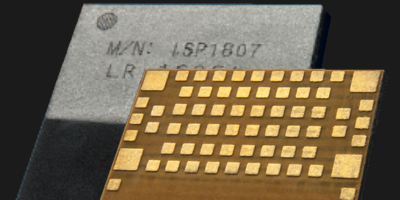Renesas Electronics believes its energy-harvesting embedded controller can eliminate the need to use or replace batteries in IoT devices. The process was developed based on Renesas’ silicon-on-thin-buried-oxide (SOTB) process technology to achieve an “extreme reduction in both active and standby current consumption”. The company says this combination was not previously possible to achieve in conventional microcontrollers. These low current levels of the SOTB-based embedded controller enables system manufacturers to use harvesting ambient energy sources such as light, vibration, and flow and eliminate batteries. The use of extreme low-power and energy harvesting gives rise to a new market of maintenance-free connected IoT sensing devices with endpoint intelligence for applications in industrial, business, residential, agricultural, healthcare, and public infrastructure, as well as health and fitness apparel, shoes, wearables, smart watches, and drones.
Renesas’ first commercial product using SOTB technology, the R7F0E embedded controller, is a 32-bit, Arm Cortex-based embedded controller capable of operating up to 64MHz for rapid local processing of sensor data and execution of complex analysis and control functions. Consuming just 20 microA/MHz active current, and only 150 nanoA deep standby current, approximately 10% of conventional low-power microcontrollers, the R7F0E is suited for extreme low-power and energy harvesting applications.
The R7F0E has a configurable energy harvest controller (EHC) function that increases robustness and minimises costly external components. The EHC enables direct connection to many different types of ambient energy sources, such as solar, vibration, or piezoelectric, while protecting against harmful inrush current at start-up. The EHC also manages the charging of external power storage devices, such as supercapacitors or optional rechargeable batteries.
Other system characteristics for extreme low power are the ability to sense and capture external analogue signals at all times because the 14-bit ADC consumes only three microA. There is also the ability to retain up to 256kbyte of SRAM data content while consuming just one nanoA per kbyte SRAM. It can also provide graphics data conversion including rotation, scroll, and colorisation with low-power hardware techniques for driving an external display using memory-in-pixel (MIP) LCD technology that consumes virtually no power to retain an image.
Yoshikazu Yokota, executive vice president and general manager of Industrial Solution Business Unit of Renesas said: “By removing the need for batteries, or the need to replace batteries, new markets will open for us and our customers. Energy harvesting will become a mandatory technology for a smart society . . . Renesas continues to push forward with e-AI to realize AI at the endpoint, in embedded devices. Looking forward, our SOTB technology will expand our reach into use cases where combining e-AI and energy harvesting will make a very large positive impact to our day-to-day lives”.
Samples of the R7F0E embedded controller are available now for beta customers, and samples are scheduled to be available for general customers from July 2019. Mass production is scheduled to start from October 2019.






